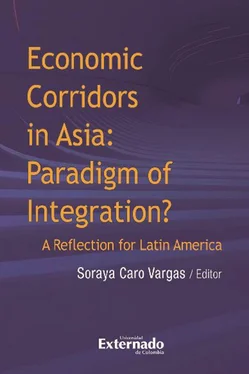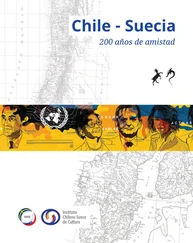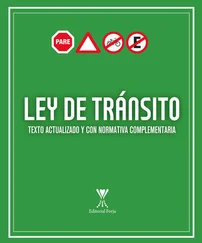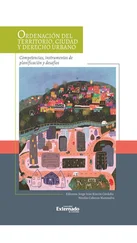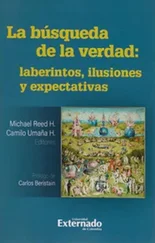Those who approach the network of corridors in Africa from the perspective of regional development and integration take recourse to Kleynhans (2001), Elshahawany (2017)who have described the corridors of development as spaces for cooperative projects which would facilitate the development of infrastructure and connectivity in the continent. The Guide to Economic Corridors (2015) by Albie Hope and John Coxwas commissioned by the Department of International Development, in which he argues for the existence of different kinds of corridors and the need to take their physical and functional dimensions into account, as they are complex structures that do not necessarily evolve in the same way.
On the other hand, the regional development banks and the international consultancies have been prolific in studies and manuals on the construction of corridors. Their publications elaborate on the geographical reach, specializations and the objectives of sectorial development, or on mechanisms of governance. They seek to highlight the social and environmental factors, effective implementation and the institutions that should be involved. Hans-Peter Brunner (2013)published a working paper with the Asian Development Bank, in which he divided the indicators for corridor analysis into three groups, according to their characteristics: structural characteristics that are mainly connected with commercial interests, those related to geographic cohesion and networks, and others related to corridor access. Finally, the challenges of economic corridors in Asia are elaborated. There are also bench marks for the analysis of these connectivity channels carried out by the specialized centres of research, like those of the Independent Science and Partnership Council (ISPC) and the European Center for Development Policy Managment in 2015 for the study of space initiatives of development and growth of agricultural corridors: “Agricultural Growth Corridors and Agricultural Transformation in Africa: Research Needs for Impact, Implementation and Institutions”. One of the objectives of the initiative was to analyse the implications that would have on agriculture research investments highly focused in private and/or public sectors especially in the African continent. In his chapter, Ahmad Saffee, uses the critical discourse analysis method and takes recourse to the work of Fairclough, who through the analysis of a written text, discourse and through discourse as practice, tries to show the connection of language with power and the making of ideas in society. With digital support, the author analyses the texts on economic corridors, the China –Pakistan one in particular, under the aegis of the Institute of Strategic Studies of Islamabad (ISSI).
Other authors describe and make exploratory studies on the impact of BRI in their countries and regions. In these chapters the writers bolster their analyses with help from other studies by expert colleagues, through the written press, which gives news on the evolution of projects and its implications, through government briefs and reports and in their own observation of the dynamics of their environment. The publication edited by Marlene Laruelle (2018)for the Central Asia Program in George Washington University: China’s Belt and Road Initiative and Its Impact in Central Asia, is an important document which will benefit those who study the different vectors of the package that China offers to its neighbours in Central and South East Asia and for those who analyse the focus of Latin America on the infrastructure gaps that affect the region. For this reason, in the analysis over the convenience or otherwise of the Chinese offer of widening the initiative of the margins and the route in the American continent, the reports of regional groups, development banks, country reports are used as sources without any adherence to a theory but instead to qualitative and exploratory analysis methods.
4. BIBLIOGRAPHIC ANTECEDENTS IN THE REGION AND THE RELEVANCE OF THIS INITIATIVE
In Latin America, the closeness to Asia and its emerging economies carries relative weight and depends on the historic relations of each particular country with the region. In general, the interest of the academy is focused on China, followed by Japan, South East Asia and India. There is not much literature available on the China BRI initiative, nor on the Chinese investment in the region. A rigorous analysis on the main infrastructure works in which China has played a role or tried to do it, was published by Enrique Dussel Peters, Margaret Myers and Shoujun Cui (2018), Building Development for a new era: China’s infrastructure projects in Latin America and the Caribbean. In the book, they gathered acknowledged experts on China from the entire continent such as Leonardo Stanley, Monica de Hart, Diana Castro and Paulina Garzón. The publication details the impact and influence of Chinese financing in Latin America, the realization or otherwise of infrastructure works, as well as the particular characteristics of the commercial relations between economies which depend on this Asian country rather than on others which are prudent or timid in their approach to Asia.
“China’s discourse on the new model of relations between the big powers and its relations with the US under Bush and Obama”, is an article published by Manuel de Jesús Rocha Pino (2018)in the Revista Mexicana de Ciencias Políticas y Sociales of the National Autonomous University of Mexico. The author analyses China’s proposal to the United States in 2012 for defining a new model of relations between the big powers. In the Mexican journal Foro Internacional , Eduardo Tzili-Apango, Eduardo Palacios-Cabrera y Bernardo Mabire (2018) in their article “The Reactive Multilateralism in Central Asia before China and Russia”, explain how extraterritorial agents in Central Asia have given way to a reactive multilateralism which benefits China and Russia,who are trying to secure their energy resources and the necessary land connections with Europe.
On the other side of the continent, Dietmar Dirmoser published “The Great March of China towards the West” (“ La Gran Marcha China hacia el Oeste ”) in the Argentine journal Nueva Sociedad Democracia y Política en América Latina (2017), in which he refers to the simplicity with which China proposes such a transformational initiative. Also from Argentina, Marcos Cordeiro Pires and Luis Antonio Paulino (2017), in their article “Reflections on the Hegemony and International Politics of China: the Belt and Route Initiative” (“ Reflexiones sobre la hegemonía y la política internacional de China: la iniciativa ‘Cinturón y Ruta ”) in the Revista de Relaciones Internacionales , wrote about the strategy of peaceful development. They analysed the evolution of Chinese foreign policy from the beginning of the reform period and concluded that China seeks to create the means in order to reaffirm its pacifist and inclusivist intentions through an integrationist project like BRI. In Colombia Mariano Turzi published “Latin American Silk Road: China and The Nicaragua Canal” in the Revista de Relaciones Internacionales, Estrategia y Seguridad, (2017), in which he wrote on the current impact of a possible canal financed by China in Nicaragua. Also in Colombia, Dusan Praj and Juan Carlos Restrepo (2017), wrote a piece titled “The Geopolitics of Chinese reform” in the international relations journal, Estrategia y Seguridad , referring to the presence of super powers in the South China sea, the institutionalisation of the BRI initiative, but also pointed to the growing economic interdependence which will ensue in case China manages to get the levels of connectivity that it wants with the West. The book El camino al siglo del Pacífico. Las otras rutas de la seda del siglo XXI (The Road to the Pacific Century. The Other Silk Routes of the XXIst Century) by Eduardo Tzili-Apango, published by the Autonomous Metropolitan University of Mexico, is handy as far as understanding the origin of the new routes which help in explaining what the author calls, “The Century of the Pacific” i.e. the presence of China, Japan, the United States and Russia in the region. Other sources are multilateral reports from some banks and risk rating firms as well as special editions of journals and widely circulated newspapers.
Читать дальше
